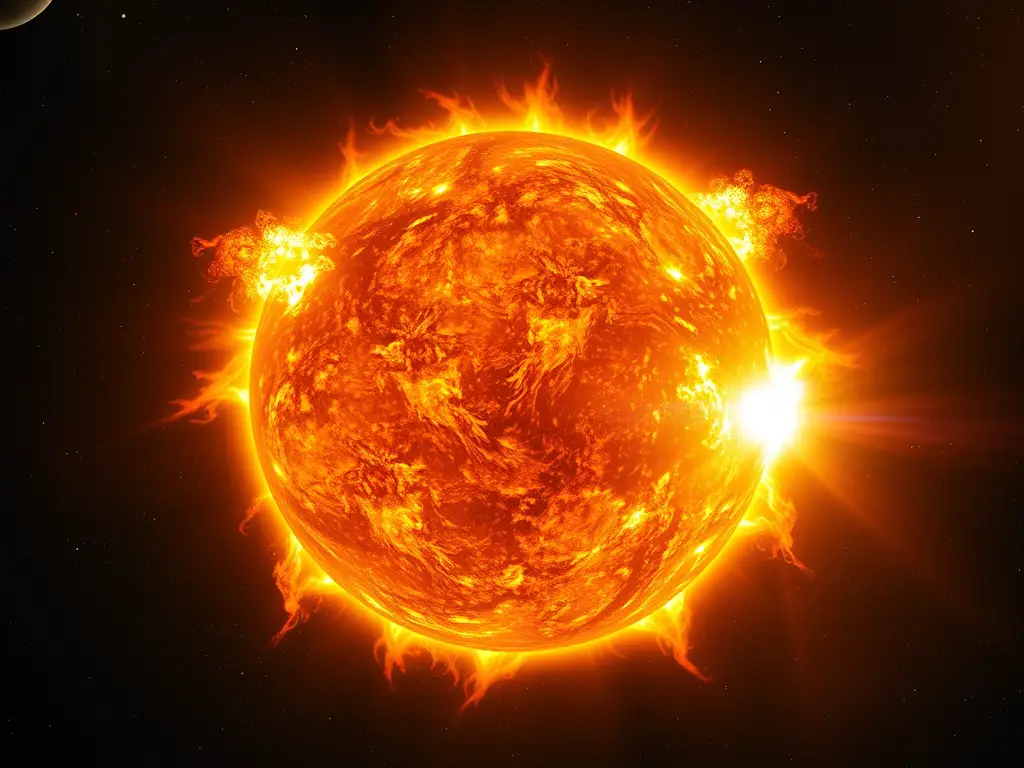Astronomers tracking the interstellar visitor 3I/ATLAS say the object brightened far more rapidly than expected as it swung past the Sun on 29 October and appeared “distinctly bluer than the Sun,” behaviour they attribute to strong gas emission captured by space-based cameras while the comet was hidden from Earth’s ground telescopes by solar glare. In an analysis posted to the arXiv preprint server, Qicheng Zhang of Lowell Observatory and Karl Battams of the U.S. Naval Research Laboratory reported that images from multiple heliophysics spacecraft showed 3I/ATLAS’s brightness scaling roughly as the inverse heliocentric distance to the power of 7.5 in September and October, a surge that outpaced typical long-period comets and coincided with a colour shift they measured in LASCO data from the SOHO observatory. “LASCO color photometry shows the comet to be distinctly bluer than the Sun, consistent with gas emission contributing a substantial fraction of the visible brightness near perihelion,” they wrote, adding that GOES-19 imagery resolved an extended coma several arcminutes across. Their dataset relied on coronagraphs and heliospheric imagers aboard STEREO-A, SOHO and GOES-19—platforms that could see the interstellar object when its position near the Sun put it beyond reach of most observatories on Earth.
The unusual brightening and colour change have revived debate about how interstellar comets behave under solar heating and how to distinguish exotic physics from ordinary, if vigorous, outgassing. In a series of commentaries, Harvard astrophysicist Avi Loeb argued that a separate, newly claimed detection of non-gravitational acceleration at perihelion—an apparent small push on the object beyond what gravity alone would provide—deserves urgent scrutiny, noting that such accelerations are often produced naturally when jets of volatile gas erupt from a comet’s surface but could, in principle, have other explanations. He characterised perihelion as an “acid test,” writing that sustained solar heating should either drive visible fragmentation and a massive gas plume if 3I/ATLAS is a loosely bound natural body, or else produce signatures inconsistent with normal cometary physics. In a subsequent post titled “First evidence for a non-gravitational acceleration of 3I/ATLAS at perihelion,” Loeb listed radial and transverse acceleration components and urged that the underlying measurements be released in full so the community can attempt independent verification. “A request for NASA to release scientific data on 3I/ATLAS” followed, in which he pressed for prompt access to astrometry and imaging that would allow teams to test whether the putative acceleration can be explained by outgassing alone.
Mainstream space-science outlets summarising the arXiv analysis and related observations have focused on what can be stated with confidence: 3I/ATLAS passed perihelion at about 1.36 astronomical units (roughly 203 million kilometres) from the Sun; spacecraft photometry indicates an unusually steep brightening trend; and colour measurements near closest approach are best explained by strong gaseous emission dominating the reflected light, hence the blue tint. Space.com reported that the rapid brightening “remains unclear” in origin and “far exceeds” the rate seen in typical Oort-cloud comets at similar distances, while Sky & Telescope told amateur observers to expect the interstellar object to emerge from conjunction brighter than when it disappeared in early October, with ground-based prospects improving in December if activity continues. Those reports echoed Zhang and Battams’s conclusion that activity intensified in the weeks before perihelion and that gas emission played a major role in the visible output.
Separate context has emerged from longer-baseline studies of the object’s surface chemistry under interstellar radiation. A recent write-up of James Webb Space Telescope results said 3I/ATLAS’s outer layers appear to have been altered over billions of years by galactic cosmic rays, forming a carbon-dioxide-rich crust tens of metres deep as carbon monoxide was converted to CO₂—findings that imply what telescopes see today may be heavily processed material rather than pristine ice from the comet’s birth environment. Researchers hope continued solar erosion could strip away some of this irradiated shell as the comet recedes, potentially exposing less altered material and offering a cleaner window into the object’s origins. The same report noted preliminary age estimates on the order of seven billion years, underscoring how unusual it is to witness such ancient matter passing through the inner solar system.
